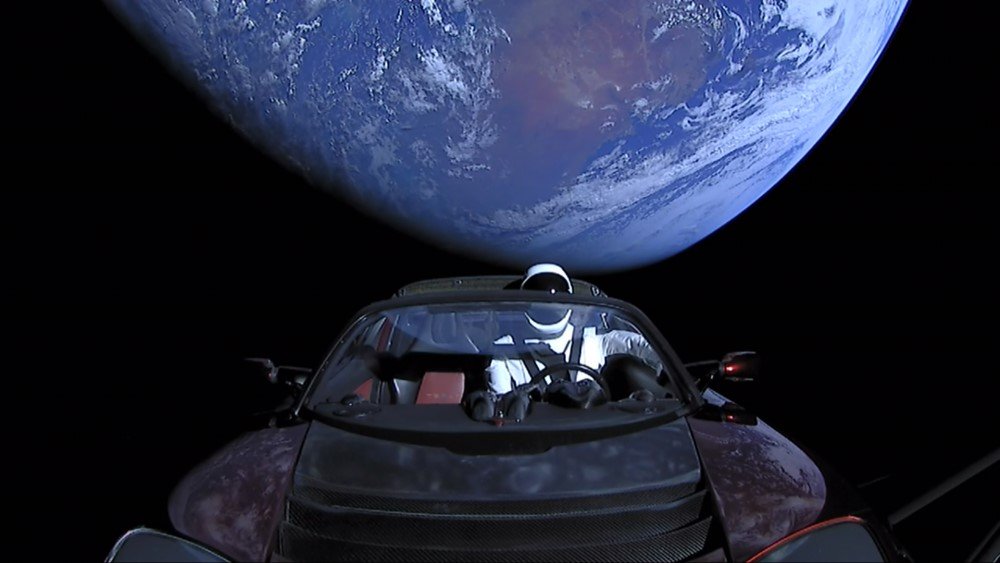8 Weird Objects Sent into Space for Science
Space has long captivated humankind's interest. We've launched many weird items and creatures into space in our attempt to extend our understanding of the universe beyond Earth, including music, a disco ball, animals human remains, and a car, among other things.
1. Canopic Jar
In December, SpaceX launched a 24-karat gold canopic jar in the shape of NASA's first African-American astronaut, Robert Henry Lawrence Jr. A canopic jar is a jar that stores the organs of a mummified individual, for people who aren't familiar with ancient Egypt.
Lawrence died in a jet crash while spying on the Soviets in the late 60s.
To honor Lawrence, SpaceX launched his gold bust into orbit, including more than 60 small satellites, atop its Falcon 9 rocket.
2. Worms
In addition, 36,000 small worms were launched into space by SpaceX. On Dec. 5, the wriggly cargo launched from Earth and landed on the International Space Station, where astronauts are researching the C. Elegans worms.
Because these worms' muscular architecture is comparable to humans', studying them can help scientists figure out why people lose muscle mass in space.
3. Tesla Roadster
SpaceX launched the Falcon Heavy rocket, a powerful rocket that was carrying a large payload: a cherry-red Tesla Roadster driven by a mannequin known as Starman. The Tesla and Starman are presently in an elliptical orbit around the sun, having recently crossed beyond Mars' outer limits.
4. Disco Ball
The Humanity Star, a reflective ball 1 meter in diameter, was developed to reflect the sun's rays and serve as "a vivid emblem and reminder to all on Earth about our delicate place in the universe," according to Peter Beck, the founder, and CEO of Rocket Lab. The cosmic disco ball, like the disco ball of the 1970s, is now extinct. In March 2018, it re-entered the atmosphere.
5. Slime
In order for astronauts to examine how non-Newtonian fluid functions in the absence of gravity, Nickelodeon sent around two liters of its famous slime to the space station.
Tossing slime-filled balloons and producing slime bubbles were among their experiments, which served as a virtual field trip. The experiment's findings could impact how liquids are handled in space, plant irrigation on the International Space Station, carbon dioxide and wastewater processing, and life support systems on future deep-space missions.
6. Lightsaber
Star Wars enthusiasts include astronauts, rocket scientists, and aerospace engineers, and when given the option to send something into space, iconic artifacts from both series have sprung to mind.
The Harmony Module was delivered and assembled to the International Space Station by a team of seven astronauts in 2007. Their release happened to fall on the anniversary of the launch of Star Wars: A New Hope in theaters. Lucasfilm teamed together with Space Center Houston to launch the original lightsaber item used by Luke Skywalker personally into space to commemorate the occasion.
7. Human ashes
Human ashes being launched into space as a tribute to their lives is a lovely way to honor human inventiveness. Gene Rodenberry, the inventor of Star Trek, was the first person whose ashes were transported into space. Since then, NASA and commercial space funeral firms have taken a number of scientists and celebrities into orbit.
8. Buzz Lightyear
A Buzz Lightyear model was sent into space on the Space Shuttle Discovery in May 2008, spending more than 15 months in space, which is longer than any astronaut or cosmonaut! Disney Parks and NASA collaborated to create interactive games, worksheets, and special messages to encourage kids to pursue careers STEM.
Final Words
While these are probably some of the strangest objects ever taken into space, there are plenty of others that did not make the cut. Furthermore, there is a lot of space up there. We've sent up some seriously strange items in over 500 launches, and we're constantly looking forward to the next unique trip.
If you liked this article, check out our Discord server here: https://discord.gg/nhZ4xvpfft




